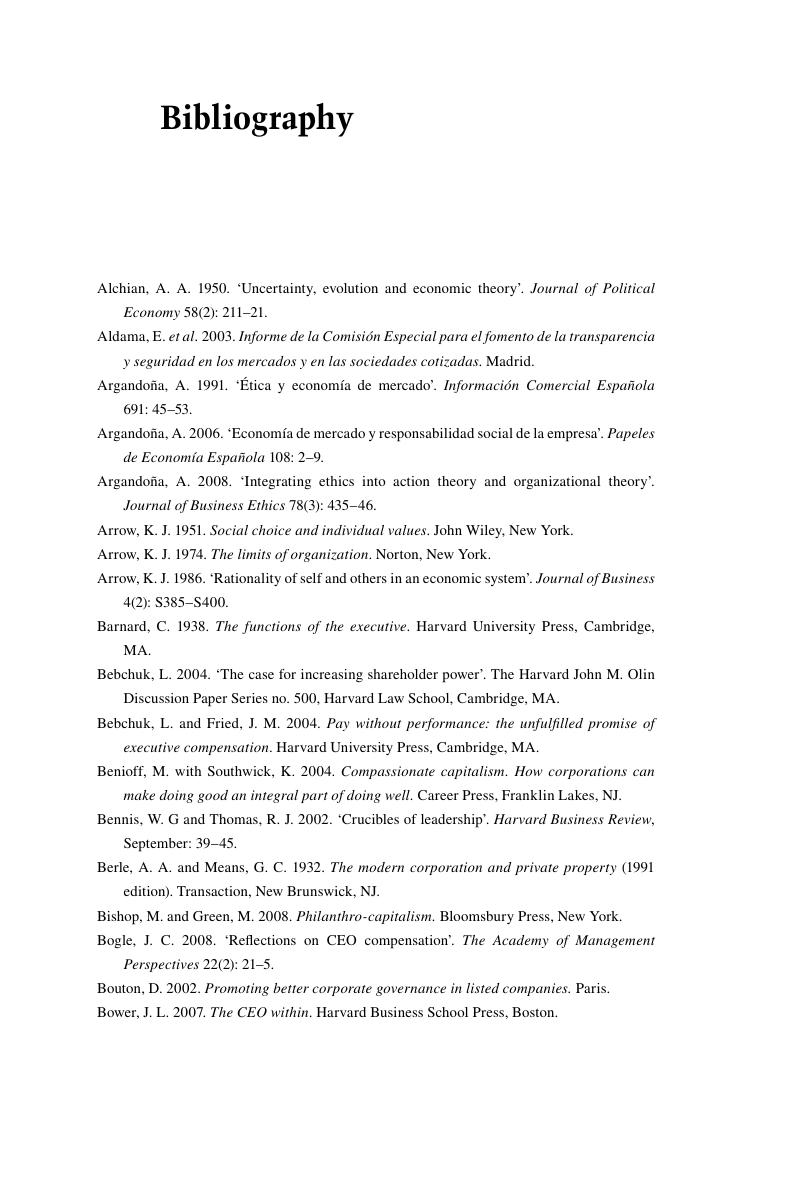Book contents
- Frontmatter
- Contents
- List of figures
- List of tables
- Preface
- Acknowledgements
- Part I Corporate crisis, leadership and governance
- Part II Rethinking the firm's purpose
- Part III The role of corporate governance in developing a respected company
- Part IV Leading and growing a respected company
- Bibliography
- Index
- References
Bibliography
Published online by Cambridge University Press: 06 December 2010
- Frontmatter
- Contents
- List of figures
- List of tables
- Preface
- Acknowledgements
- Part I Corporate crisis, leadership and governance
- Part II Rethinking the firm's purpose
- Part III The role of corporate governance in developing a respected company
- Part IV Leading and growing a respected company
- Bibliography
- Index
- References
Summary

- Type
- Chapter
- Information
- Building Respected CompaniesRethinking Business Leadership and the Purpose of the Firm, pp. 254 - 260Publisher: Cambridge University PressPrint publication year: 2010



